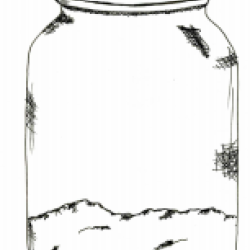Source Institutions
Source Institutions
Add to list Go to activity
Activity link broken? See if it's at the internet archive

In this activity, learners will design a way to identify a powder found at a crime scene by comparing it with known powders, with the goal of solving a crime. Learners will describe the various physical properties of chemicals and will discover how to use deductive reasoning to solve problems. This activity includes optional extensions where learners can compare chemical and physical changes, determine whether household substances are acids or bases, and repeat this activity using additional challenges.
- 1 to 2 hours
- 45 to 60 minutes
- $10 - $20 per group of students
- Ages 8 - 11
- Activity, Experiment/Lab Activity
- English
Quick Guide
Materials List (per group of students)
- 1/2 gallon container
- (Optional) Cafeteria trays
- (Optional) Coffee or spice grinder
- Heat sources (small candles or Bunsen burners)
- (Optional) Lighter
- (Optional) Magnifying glasses
- Permanent marker
- Strainer
- Tongs or oven mitts
- White ice cube trays or Styrofoam egg cartons
- Baking powder
- Baking soda
- Detergent
- Flour
- Powdered sugar
- Plaster of Paris
- Aluminum foil
- Cabbage juice indicator
- Vinegar
- Tincture of iodine
- Water
- Pop-top squeeze bottles
- Straws or eyedroppers
- Small cups
- Plastic spoons
- Toothpicks
- Powder testing areas
- Red cabbage
- Salt
- Proof is in the Powder Booklets
- Testing instruction cards
- Masking tape
- Paper towels
Subjects
-
Physical Sciences
-
Heat and Thermodynamics
- Heat and Temperature
- Heat Transfer
-
Chemistry
- Chemical Bonding
- Chemical Reactions
- Acids and Bases
- Solutions
-
States of Matter
- Solids
- Liquids
-
Structure and Properties of Matter
- Atomic Structure
- Elements and Periodic Table
-
Heat and Thermodynamics
Informal Categories
- Crime Science
- Literature
Audience
To use this activity, learners need to:
- see
Learning styles supported:
- Involves teamwork and communication skills
- Links STEM to other topics of interest such as arts and humanities
- Involves hands-on or lab activities
Other
Components that are part of this resource:
Includes alignment to state and/or national standards:
This resource is part of:
Access Rights:
- Free access
By:
- Exhibits Development Group; Geoffrey M. Curley + Associates
Rights:
- All rights reserved, , 2014
